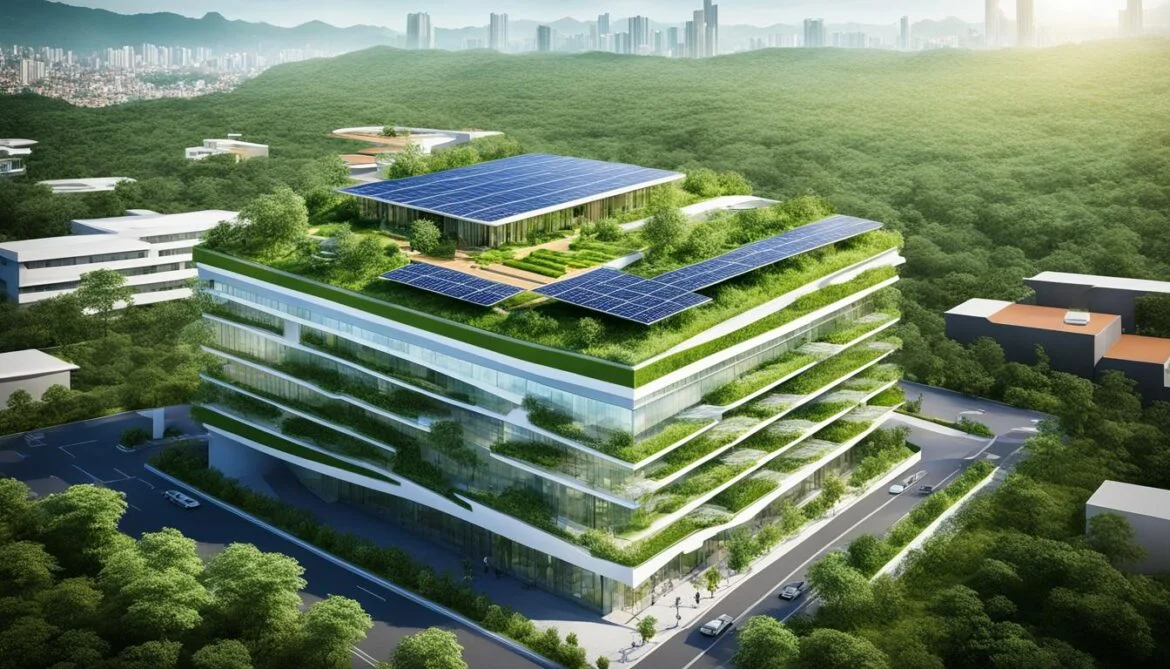As global awareness about environmental sustainability increases, the construction and real estate industries are embracing green building practices. Investing in green buildings is not only beneficial for the environment but also highly profitable. This article explores why green building investment is a smart financial decision, highlighting its economic advantages, market trends, and long-term benefits.
What is Green Building?
Green building, also known as sustainable or eco-friendly building, involves designing, constructing, and operating buildings in ways that reduce or eliminate negative impacts on the environment. This can include the use of energy-efficient materials, renewable energy sources, water conservation measures, and waste reduction strategies. Green buildings are designed to be environmentally responsible and resource-efficient throughout their lifecycle.
Economic Benefits of Green Building Investment
- Energy Savings
One of the most significant financial advantages of green buildings is reduced energy consumption. Energy-efficient technologies such as LED lighting, high-efficiency HVAC systems, and advanced insulation can drastically cut energy bills. According to the U.S. Green Building Council (USGBC), green buildings typically reduce energy use by 30% to 50%, resulting in substantial cost savings over time. - Higher Property Values
Green buildings often command higher property values compared to traditional buildings. This is due to their lower operating costs, enhanced occupant comfort, and growing demand for sustainable properties. Studies have shown that green buildings can achieve a premium of up to 10% in property values and rental rates. - Tax Incentives and Rebates
Governments worldwide offer various incentives to promote green building practices. These can include tax credits, grants, and rebates for energy-efficient upgrades and renewable energy installations. These incentives can significantly reduce the initial investment costs for green buildings, improving the overall return on investment (ROI). - Lower Operating Costs
In addition to energy savings, green buildings often have lower water and maintenance costs. Water-efficient fixtures, rainwater harvesting systems, and native landscaping reduce water usage, while durable, low-maintenance materials decrease maintenance expenses. These savings contribute to the overall financial viability of green building investments.
Market Trends Favoring Green Building Investment
- Increasing Demand for Sustainable Spaces
There is a growing demand for sustainable and healthy living spaces among consumers. Tenants and buyers are increasingly seeking out green buildings due to their environmental benefits, improved indoor air quality, and enhanced comfort. This trend is driving the market for green buildings and making them a more attractive investment option. - Corporate Sustainability Initiatives
Many corporations are adopting sustainability initiatives and are looking to lease or purchase green office spaces to align with their environmental goals. This shift is creating a strong market for green commercial properties, with businesses willing to pay a premium for sustainable work environments. - Government Regulations and Standards
Governments around the world are implementing stricter building codes and regulations that promote energy efficiency and sustainability. Compliance with these standards is becoming mandatory, making green building practices the new norm in the construction industry. Investing in green buildings ensures that properties remain compliant and competitive in the market. - Green Building Certification
Obtaining certifications such as LEED (Leadership in Energy and Environmental Design) or BREEAM (Building Research Establishment Environmental Assessment Method) can significantly enhance the marketability of green buildings. These certifications are recognized globally and serve as a testament to a building’s sustainability performance, attracting environmentally conscious investors and tenants.
Long-Term Benefits of Green Building Investment
- Resilience to Energy Price Fluctuations
Green buildings are less vulnerable to energy price fluctuations due to their lower energy consumption and reliance on renewable energy sources. This resilience can lead to more predictable operating costs and better financial stability for property owners. - Enhanced Occupant Health and Productivity
Green buildings are designed to provide a healthier indoor environment, with better air quality, natural lighting, and thermal comfort. These factors contribute to improved occupant health and well-being, leading to higher productivity and lower absenteeism rates. For commercial properties, this translates to higher tenant satisfaction and retention. - Positive Environmental Impact
Investing in green buildings helps reduce the carbon footprint and environmental impact of the construction industry. By using sustainable materials, reducing waste, and conserving resources, green buildings contribute to a more sustainable future. Investors can take pride in knowing that their investments are making a positive difference for the planet. - Future-Proofing Investments
As the world continues to prioritize sustainability, green buildings are likely to become the standard rather than the exception. Investing in green buildings today positions investors ahead of the curve, ensuring that their properties remain desirable and compliant with future regulations.
Conclusion
Green building investment is not just a trend; it is a profitable and forward-thinking approach to real estate. The economic benefits, market trends, and long-term advantages make it a wise choice for investors seeking sustainable and lucrative opportunities. By investing in green buildings, investors can achieve financial success while contributing to a healthier and more sustainable world.
By focusing on energy savings, higher property values, government incentives, and the growing demand for sustainable spaces, it’s clear that green building investments offer significant returns. The long-term benefits of resilience to energy price fluctuations, enhanced occupant health, positive environmental impact, and future-proofing further solidify the case for green building as a smart investment strategy.


